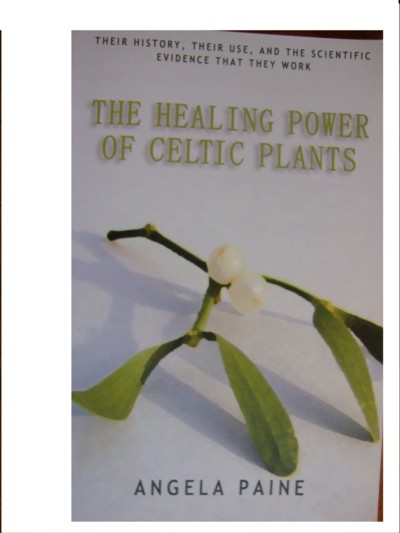Humulus lupulus - Hops are used to make beer and have been for centuries. The genus Humulus belongs to the family Cannabaceae and the order Urticacales. The species name lupulus means little wolf in Latin, because the hop plant climbs onto other plants in the same way that the wolf climbs onto the sheep. The word hop is derived from hoppen the Anglo Saxon for climb.
There are separate male and female hop plants, the fruits or flowers of which are quite different. The hop plant climbs like a fast growing vine, called a bine, winding itself round anything it can find, growing 7-8 metres in one year, producing its fruiting bodies then dying back in the autumn. When the plant reaches a certain height it starts to blossom. It needs long days to blossom, so it cannot grow further south than a certain lattitude. Too far north it suffers from an adverse climate. So it is restricted to growing between 38 and 51 degrees latitude, in the northern hemisphere and 37 - 43 degrees latitude in the southern hemisphere.
Beer makers only use the female flowers of the hop plant. The hop is a soft green cone, called a strobile and is composed of pale green petals. Each petal is atttached to a zigzag stalk at the centre of the hop and at the base of each petal there is a gland, that looks like a seed, covered in a sticky yellow substance, lupulin.
The hop bines are cut down and picked in August or September. The roots remain in the ground to produce hop bines the next year. Hop root stocks can live for up to 50 years. Hops are dried as soon as they have been picked, to stop them going mouldy. The bitter principles in hops are unstable and deteriorate fast. So in the past brewers bought their hops as soon after the harvest as possible to add the maximum flavour to their beer. Nowadays 95% of the hop harvest is processed into pellets. The hops are homogenized, pressed into granules, stored in airtight containers in the dark and shipped.
History of Hops used as medicine
Hildegard von Bingen, 1098-1179, wrote in Physica, wrote that hops has little use for humans: it "increases melancholy in men". But ts bitterness fends off decomposition of beverages and increases shelf life".
So from the 11th century hops were used in Germany to improve the flavour of beer and preserve it.
Paracelcus, 1493-1541, used hops to help digestion and Matthiolus, 1501-1577, said that hops were diuretic and stimulated the gall bladder to produce bile. Hecker in 1814 said that hops were a strong tonic and also had a calming effect.
Physicians gave hops to King George III to calm him. They filled pillows with hops for him to lay his head on when he went to bed. Braungart 1906 recommended washing the hair in hop tea as a cure for baldness.
People even used to bathe in cold brewery-sludge, because they thought it would rejuvenate them.
To sum up, traditionally hops were used as a sedative, to reduce pain, to treat cystitis, prostatitis and as a diuretic, to treat skin conditions and baldness.
Lupulin
Lupulin is the sticky, yellow resinous substance inside the female hop strobile (or flower). A French pharmacists called Planche, who praised the aromatic, tonic and sleep inducing properties, isolated it in 1813 and US scientists started to investigate its chemistry soon after. In 1820 an American doctor, Ives, said that he used it on his patients to "quiet great nervous irritation". At this time the drug of choice for calming the nerves and inducing sleep was opium, which caused constipation, as well as being addictive. Hops have the great advantage over opium that they are neither addictive, nor cause constipation.
Fresh lupulin consists of several compounds, mainly bitter acids, volatile oils and polyphenols. It contains 15-30% resins, including humulon and lupulon, tannins and flavonoids. All these compounds have medicinal properties.
Herbalists use 0.3-1g lupulin to treat incontinence, to reduce sexual desire and to reduce irritability and sensitivity to stimulation of the sexual organs, to treat sleeplessness, nervousness, migraine and sluggish digestion.
In 1967 doctors carried out a study, giving 250mg of lupulin to 15 volunteers but they did not notice any sleep inducing effect. Maybe the volatile oils had evaporated and perhaps it is the volatile oils that produce the sleep inducing effect. However several scientists have managed to tranquilize various animals using hops.
In 1983 German scinentists, Hansel, Wolfart and Schmidt isolated a volatile alcohol from hops (dimethylvinyl carbinol) which they think has sedative properties. This compound actually increases during storage. Perhaps when the bitter acids degrade, they produce this compound.
More recently scientists Abourashed, Koetter and Brattstrom tested hop extract in vitro on the melatonin receptor. The pineal gland secretes melatonin, which is responsible for maintaining diurnal circadian rhythms. Circadian rhythms are the sleep/wake rhythms that rule our lives. These rhythms are connected with the light/dark cycle of the 24 hours and are upset by long haul flight. So melatonin plays an important part in causing us to sleep at a regular time.


